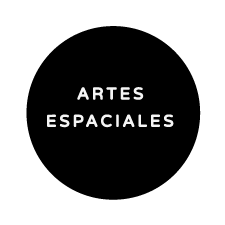Angelo Vermeulen & Tine Holvoet
ELiSSA (1550-2050)
Is the first art project created in the framework of Space Ecologies, and was produced for the international art exhibition Coup de Villein Sint-Niklaas in Belgium. The work is a text-based architectural integration and offers a multi-layered reflection on the issue of human space colonization. It has been specifically conceived for the attic of the oldest building in town, the 16th century Walburg Castle. As such, past and future, historical architecture and space habitation are brought together into an unusual dialog.
 M
M
Concept
Is a poetic preview of Space Ecologies (working title), the artistic research project initiated byAngelo Vermeulen and Tine Holvoet dealing with habitat and space exploration. This multi-layered installation revolves around the urge for survival and procreation, confinement, design, personal affection, and the archetypal human fear of annihilation. For this exhibition, Vermeulen and Holvoet design conceptual narratives linked to the European Space Agency’s MELiSSA project. Based on the concept of an artificial ecosystem, MELiSSA, short for Micro-Ecological Life Support System Alternative, is the European model for a regenerative life support system for astronauts. MELiSSA allows the production of oxygen, water and food, and the recycling of organic wastes and carbon dioxide. Such regenerative life support systems will enable future long-term manned space missions such as a lunar base or a mission to Mars by ensuring crew survival.
An architectural integration with hibernation sculptures, dropped ceilings, text and graphics, and two sole green plants refers to space-based ecosystems, and to a general human and personal desire to live and work in space for extended periods longer than 14 months – the longest period any astronaut has spent in space until this date.
In the attic of the Walburg Castle (1550), one of the oldest buildings of Sint-Niklaas, brings together concepts of life support ecosystems, psychological resistance, mutation, desires for design and aesthetics in space, the politics of colonization, and the encounter with the ‘Other’. The room itself is transformed into a metaphorical spacecraft drawing upon the imaginary of manned space exploration. The ceiling integration of graphics and text refers indirectly to the tradition of trompe-l’oeil ceiling painting that started in Renaissance. In these paintings, heavens and architectural volumes are being suggested, transforming the physical building into a gateway to limitless space. In a similar approach is used, albeit one in which the representation of space is indirect and is generated in the spectator’s mind, through the experimental use of text and typography.
With this art installation, Vermeulen and Holvoet initiate a master-project, an indefinite series of installations, (re)presentations and texts, trying to link some of the essential ideas of the MELiSSA project to contemporary art, architecture, design, and philosophy.
Typographic ceiling design
The typographic design of the ceiling panels is currently developed with graphic designer Raf Vancampenhoudt.
Bed sculptures
Two minimal ‘bed sculptures’ are being designed and refer to the theme of hibernation during space travel. Two small plants will be integrated in these structures as the two sole living units in the installation.
publicado el Mayo 31, 2014
Artes Espaciales 2025 | Theme by Eleven Themes


Deja un comentario